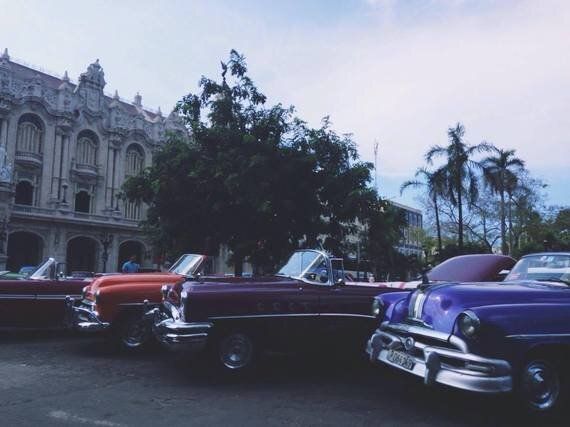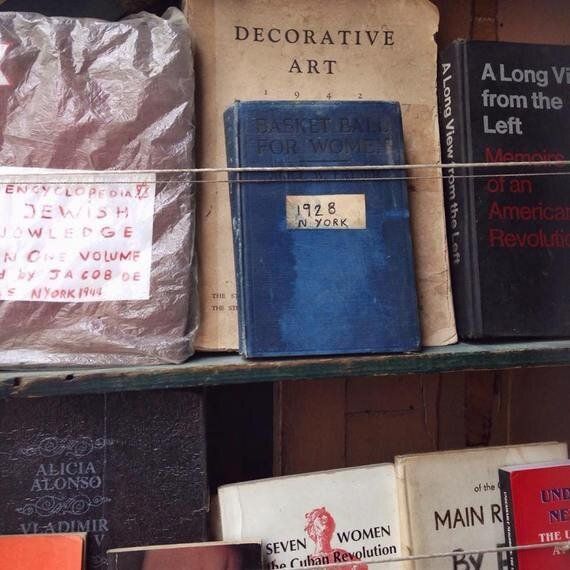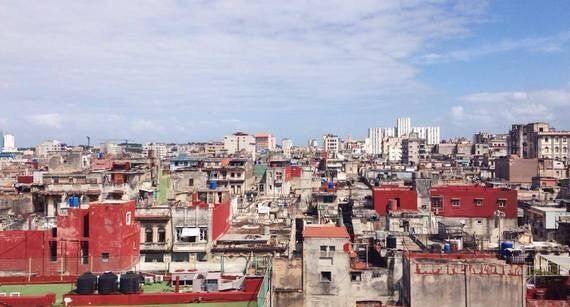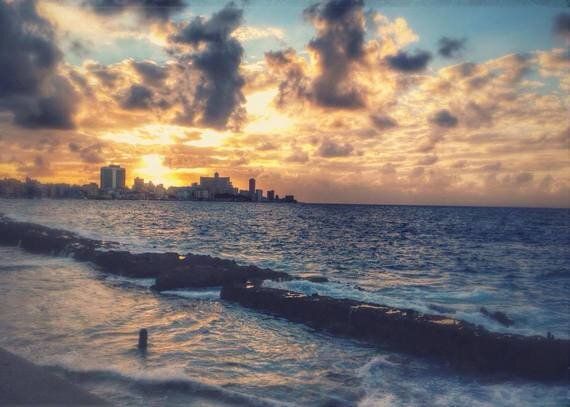Cuba is often described as a difficult country in which to travel. Tourist facilities are underdeveloped (a blessing and a curse), there are two currencies, Spanish basics are more or less a requirement, and there is, as of yet, no real hostel culture, so travellers rely on casas particulares to stay in. The myriad frustrations that will arise as a result of these are always best accepted with a deep breath and a smile.
Havana is, naturally, a slightly different ball game to the more rural parts of the island. The phrase 'brink of change' is bandied about a lot, but it's a description that does not seem entirely accurate. Unlike the majority of capital cities, you are not going to find chain restaurants pushing up against each other, and beautifully dilapidated buildings are not in the process of being transformed into office blocks--the tree poking through the upper floor window is likely to stay there for a while yet.
It is a city that is perfect to wander around, and have its hidden first edition book stores, ridiculous architecture, and multitude of bars enjoyed at leisure. But there is lots to see, lots to discover, and lots to indulge in, so some semblance of planning can be to your benefit.
Day One
It is worth staying on the east side of the city for your first day, in La Habana Vieja, where most of the beautiful plazas and bustling calles are.

To orientate yourself, head to Parque Central and rent one of the symbols of modern Cuba, an impossibly flash American car, to drive you around for an hour or so. Haggle mercilessly, and make sure you know what car you're getting and whether your driver speaks English (if you don't speak Spanish), before you agree on a price.
Get dropped back at Parque Central, and check out the pre-revolution government centre, El Capitolio, before heading down Calle Obispo to find one of the most delicious treats in Cuba: Coco Glace from Soda Obispo. Fresh coconut ice cream, served in half a coconut shell, with dark chocolate skating across the top. Ten pesos well spent.
Walk the ten minutes to Museo de la Revolución. The building itself is a piece of Cuban history, with the bullet holes from the 1957 attempted assassination of Fulgencio Batista by student revolutionaries visible on the impressive stairwell. However biased the information and exhibits detailing the Revolution may or may not be, the artefacts on show are moving, and a few hours here is an excellent way to begin to get to grips with Cuba's history and rhetoric.

Next, head to Plaza Vieja. This is one of the most beautiful squares in Havana, and all of the buildings that face into it are, unbelievably, former residencies of Cuba's ultra-wealthy. Today they are mainly restaurants and bars. The one worth visiting is La Taberna de Muralla, one of Cuba's few micro-breweries. Appalling service is forgiven for excellent beer. Don't bother with Cristal or Bucanero here, get their darkest brew and sit out in the square, enjoying superb live music.
After a few beers, lunch may well be on the cards, but don't get too excited. There is very little good to say about Cuban food. The amount of land given to sugar growth and the US embargos means that Cuban food, through no real fault of the Cubans, is boring. You have three options: go and make an enormous pile of guacamole back at your casa (delicious and creamy avocados are one thing that are in great abundance in Cuba), buy uninspiring moros y cristianos (rice and beans) with a meat cutlet and three slices of cucumber at any restaurant on the road, or visit what may, regretfully, become a mainstay of your trip to Cuba: a hole in the wall. There are many of these tiny kitchens behind wrought iron grills, and though they vary in quality, they all share the quality of being extremely cheap. Pick up a pizza and a guava juice, or a pan tortilla and an espresso, for about 50p.
After lunch, wander from Plaza Vieja to Plaza de Armas, via Plaza de San Francisco de Asisi. Along this route there are lots of excellent galleries worth stopping at, notably Casa de Carmen Montilla.
Plaza de Armas is home to an extraordinary market set around the square. It is essentially a book market--but with incredible first edition novels, copies of National Geographic from the twenties, and mother-of-pearl covered bibles in abundance. The stalls also hold various curios gleaned from the abandoned houses of those who fled Cuba. On top of all this, the square is heaven for vinyl lovers.

If you want to splash out, go to La Guarida for dinner. Expensive, but surely one of the best restaurants in Cuba. Decadent food is served in the most wonderfully crumbling building. Book in advance and ask to be seated on the balcony. After creamy lobster, go to the bar on the top floor for a mojito overlooking night-time Havana. If any further recommendation is needed: Jay Z and Beyoncé once ate there. And Sting.

Day Two
Go to Castillo de los Tres Reyes Del Morro in the morning, taking the ferry across the bay for one CUC. Climb up the walls and wander along. The fort itself has an excellent array of military equipment, and it's a good place to spend the morning before the Cuban heat chases you into air-conditioned spaces.
Get the ferry back and walk to the National Museum of Fine Arts, which is split into two separate buildings. One is devoted entirely to Cuban work, and the other international, which holds an excellent collection of Spanish oils. Set aside a few hours to enjoy both, and the walk between them.

The things Cuba does do very well are all nationalised: sugar, rum, and ice cream. In other words, happiness is tax-free. Grab a taxi from the galleries to Havana's government-owned ice cream parlour Coppelia, which features in the film Fresa y Chocolate, for the start of an afternoon of indulgence. Instead of a cup of tea, people meet over a platter of ice cream--ten or fifteen scoops as standard--and it is truly a sight to behold. Bring Moneda Nacional, sit with the locals in the groovy spaceship-shaped building, and do as the Cubans do.
After gorging, roll yourself down to the opulent Hotel Nacional for a drink and sneaky use of their outdoor pool and sun loungers. The nature of nationalism means that you can buy a bottle of well-aged rum from the luxurious hotel shop for the same price as anywhere else--about $5. There is a woman hand-rolling cigars downstairs, or you can pick up a Cohiba, famous for having been Castro's favoured brand. Take your purchases down to Havana's 8km Malecón, and enjoy them on the sea-wall as the sun sets over the waves.

Head to Jazz Club La Zorra y el Cuervo on Avenida 23, which grants entry through a telephone box, and listen to an excellent live show. If you have any energy left, go to Salsa Bar 1830, and, aided and abetted by rum cocktails, enjoy your final night in this brilliant city.
This post has been published on The Huffington Post's blogging platform. The views and opinions expressed in this blog are those of the author and should not be taken as those of The Huffington Post. The Huffington Post does not allow bloggers to acquire products, access or accommodation for review in the site's name.